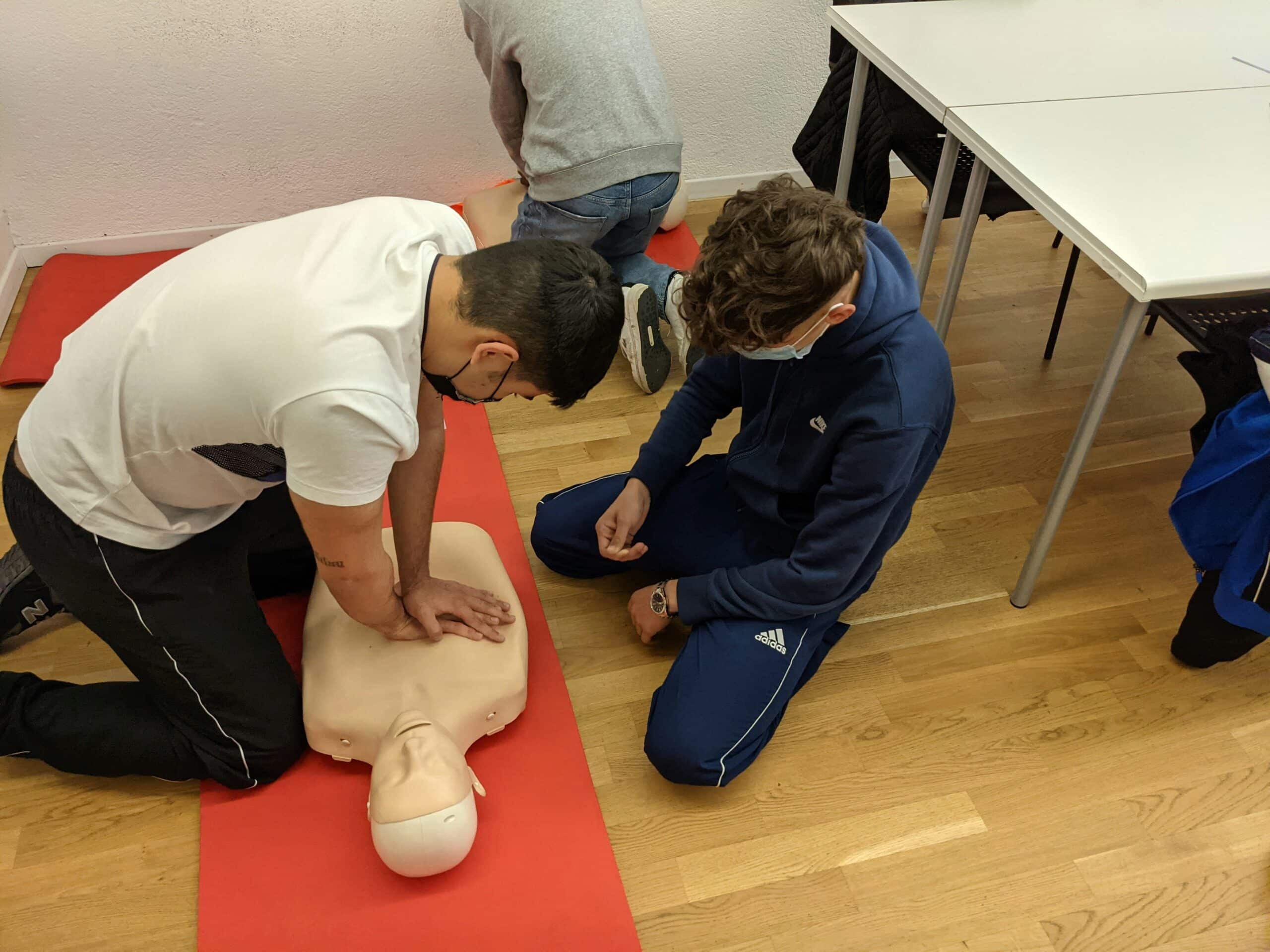ALS vs. BLS Training and Certifications for Nurses

The science of resuscitation has significantly deepened our understanding of how trained professionals can make a difference when faced with life-threatening emergencies. Through didactic and skill-based learning, both Basic Life Support (BLS) and Advanced Life Support (ALS) certifications equip nurses with the ability to identify the signs of a serious health crisis and quickly administer care.
However, while the end goal is the same, the scope of these two interventions is different. ALS and BLS offer varying levels of care, utilize different equipment, and require separate coursework to master. Understanding the key differences between ALS vs. BLS training can help nurses decide when, how, and why to get each certification throughout their careers.
What is Basic Life Support?
BLS is a framework of life-saving medical concepts and interventions performed as the first steps in an emergency. BLS is often administered by trained first responders, healthcare providers, or any other individual with the proper training, and focuses on non-invasive tactics to support cardiopulmonary circulation.
The basic techniques of BLS include chest compressions and ventilations for high-quality CPR, AED use for patients with lethal arrhythmias, bleeding control, basic airway management interventions like mouth or mask-to-mouth ventilatory support, as well as how to respond to a foreign body airway obstruction.
When administering BLS care to an individual, the goal is to maintain the basic circulatory or ventilatory function during an emergency like cardiac arrest or respiratory failure. However, it’s only intended to keep a patient alive until advanced medical care can be provided or the patient is transported to an acute care facility.
BLS Training
BLS training is mandatory for all nurses and many other healthcare professionals, and it must be renewed every two years. Courses typically last about four hours. They can be taken online, in-person, or in hybrid formats, and are usually completed in a single day. If you are a first-time learner, you will need to take the full BLS class and pass a final assessment. Renewals typically require a shorter course, but you will still be required to pass the same test.
BLS certification and BLS recertification covers:
- Rapid assessment and visual survey
- CPR/AED for adults, children, and infants
- Obstructed airway interventions
- How to respond to potential opioid overdoses
- Critical thinking, communication, and team dynamics
- The emergency medical services system
- Legal considerations
- Precautions
- Scene safety
What is Advanced Life Support?
ALS takes all the foundational concepts of BLS to the next level with advanced knowledge in resuscitations and interventions that bring a higher level of care directly to the patient. ALS certification is often obtained by paramedics, nurses, and licensed healthcare providers who work with high-risk populations.
Training builds on fundamentals like high-quality chest compressions, effective manual ventilations, and early defibrillation with medications and advanced electrical therapies including synchronized cardioversion or external cardiac pacing. These techniques empower nurses and frontline workers to make a more meaningful impact on a patient’s chances of survival in critical situations by managing more complex dynamics.
ALS Training
ALS training is mandatory for some nurses and healthcare professionals working in critical care environments, but it’s not a requirement for everyone like BLS. Coursework for ALS typically takes about twice as long as BLS, and covers the following topics:
- Advanced assessment skills
- Managing respiratory distress, failure, and arrest
- Treating cardiac various arrhythmias and cardiac arrest
- Providing post-cardiac arrest care
- Treating acute coronary syndromes
- Identifying and treating acute strokes
- Advanced airway management skills
- Advanced electrical therapies such as defibrillation and cardioversion
- Medication administration
- How to gain IV access
- Rhythm interpretation
- How to recognize the impact of team dynamics on performance
- Communication: How to model effective communication
Utilizing Your Training and Certification
When comparing ALS vs. BLS, healthcare professionals need to know how these skills apply to different roles and in what situations they are most likely to use them. The following table offers a general overview of what to expect.
Basic Life Support (BLS)Advanced Life Support (ALS)TrainingTraining in basic life-saving Interventions, often used by first responders, EMS, and lay rescuers.Advanced training and certification, typically obtained by paramedics, physicians, and other advanced healthcare providers.ScopeFundamental life-saving interventions, including cardiopulmonary resuscitation (CPR), hemorrhage control, and basic airway management.Advanced medical procedures, such as advanced airway management, intravenous (IV) therapy, medication administration, and cardiac monitoring.ResourcesUse of equipment such as automated external defibrillators (AEDs), bag-valve-mask devices, cervical collars, and basic first aid supplies.Use of advanced equipment and tools, such as cardiac monitors, defibrillators, advanced airway devices, and medication delivery systems.
In-Person vs. Online Certification
Traditionally, both ALS and BLS certification and recertification required taking in-person classes with a certified instructor. These options are still popular today because they offer hands-on training, one-on-one coaching, and instant feedback. However, they typically require taking one or several days off of work and driving to a designated location.
Today, there are fully online options available that deliver excellent training and allow learners to become certified on a timeline that matches their busy schedules. These courses are excellent choices for people who excel in self-led learning environments that allow them to explore information at their convenience. They are also especially valuable for nurses who work long or awkwardly-timed shifts. Final assessments are completed online as well, and they provide the option of reviewing and retaking the test if you don’t pass the first time around.
Getting the Best ALS and BLS Training Available
Regardless of whether you’re taking the first of many mandatory BLS courses or upgrading your skills with ALS training, completing your certification is an important part of any health professional’s career. Understanding the difference between ALS vs. BLS training is the first step for knowing how and when they will be used in your role, but like all things in healthcare, you’ll need to constantly develop and refresh these life-saving skills.
Premiere is committed to making sure nurses, doctors, dentists, and other healthcare professionals always have access to high-quality online ALS and BLS certification and recertification that delivers effective, in-depth training for these critical techniques.
All courses by Premiere are created by industry experts, and make it easy to fulfill your professional obligations and develop your career on a timeline that works for you.
Latest Posts


.png)
.jpeg)


